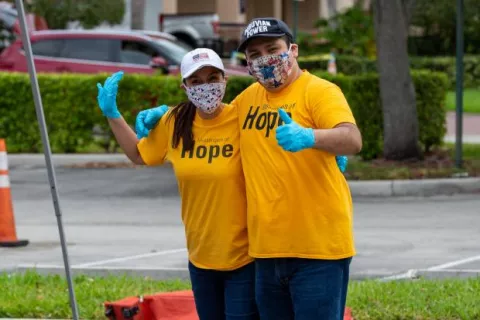
As a Readiness Challenge Winner, Miami did the work yesterday to be ready for the crisis today
In recent months, Miami, like many other cities, has been concentrating on COVID-19 pandemic-related needs—establishing small business and resident assistance programs, drive-thru virus testing and other initiatives.
In 2017, however, when the city was named a Smart Cities Council Readiness Challenge winner, flood mitigation was one of Miami’s central concerns—prompting it to consider how smart technology might help the city address rising water level and other concerns, according to Mike Sarasti, Miami’s chief information officer, director of innovation and technology. Research from the Southeast Florida Regional Climate Change Compact predicts by 2060, water levels in the area could rise by potentially two and a half feet.
“We’ve got water coming in from multiple directions—from the Everglades, the ocean, actually from the ground and rainfall,” Sarasti says. “Water sensing and management has always been [a factor in] how we build a design for the future; obviously [that includes] flooding, particularly in places where we know it’s an issue—is there a way we could use sensors, [for instance], to divert traffic in times that might be happening?”
Working Together to Maximize Technology
Miami adopted a more collaborative approach to planning and operations, Sarasti says, after participating in the Readiness Challenge.For example, since March of this year, the city’s COVID-19 response has included regular interdepartmental calls to monitor the virus’ progression and assist in response planning. The Department of Finance introduced an accounting project string to track all COVID-related expenditures. An informational hotline was also offered to provide employees with the latest city operation and other updates.
Whereas before the Readiness Challenge, smart city discussions may have only happened between a couple of people in a department, today, the process can encompass municipal employees from a number of divisions. “Getting experts in the field in a room saying, ‘We don't need sensors everywhere; we need them in this particular location’ is the result of ongoing socializing,” Sarasti says. “The first time we did that around this topic was the Readiness Challenge. It was a great kick-off for people to break out of a perspective that this is a technology thing. It’s not; this is a city strategic planning project.”
Working in closer contact has also helped the city expand its thoughts, according to Sarasti, beyond solely utilizing standalone sensors to measure flooding conditions.Our thinking has evolved,” he says. “It could [involve] using an existing camera that's in place for police activities or public safety, ingesting some of those same feeds and repurposing the analytics and analyzing the data. You could use video analytics, cameras and AI while you’re detecting pedestrian traffic to also detect flooding activity.”
Using Smart Tech to Address Community Needs
Since being chosen as a 2017 Readiness Challenge winner, Miami has also engaged in outreach efforts to obtain input from residents that could help shape the city’s tech choices, such as a project it worked on with the city of Miami Beach roughly two years ago.
The project involved:
- Looking at the possibility of building a citizen-facing, shared data platform to provide information relating to rising sea levels to area residents
- Helping residents understand how climate change could affect them personally in the short-term—for instance, altering a route they planned to take when driving
- Helping residents comprehend the long-term impact of climate change, such as the risk that would be involved with a property investment they were considering
“It was the first exercise in community engagement, really—which has become a core competency in the way we’re thinking about this,” Sarasti says. “We want to make sure we are putting this in front of users and asking them, ‘What are the most important problems and challenges we should be taking on?’”Miami has also merged its technology department with its innovation office. Sarasti says the move helped everyone think a bit more holistically, facilitating a data-driven approach that will enhance the city’s ability to identify tech tools that can improve processes—a key factor in being able to address emerging situations like the current COVID-19 pandemic—as well as citizens’ overall experience.
At the end of the day, you should be thinking about what the technologies are and what the problems being solved at the street and the human level are—and everything should be based around that,” Sarasti says. “The fact that we’re not just thinking about this as a technology—we’re thinking about this as a strategic initiative—has really made all the difference.”



